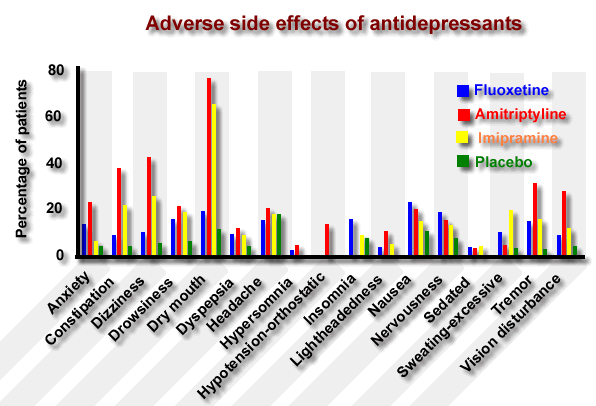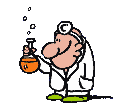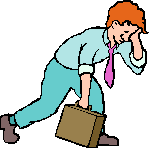|
DEPRESSION
There is
always hope. Depression blinds us to that fact. If we can somehow hold
on to our hope, just maybe we can find a way to get through.

Without emotion, man would be nothing
but a biological computer. Love, joy,
sorrow, fear, apprehension, anger,
satisfaction, and discontent provide
the meaning of human existence.
Arnold M. Ludwig---1980
What is depression / can
alternatives help...
Being clinically depressed is very different from the down
type of feeling that all people experience from time to time. Occasional
feelings of sadness are a normal part of life, and it is that such feelings
are often colloquially referred to as "depression." In clinical
depression, such feelings are out of proportion to any external causes. There
are things in everyone's life that are possible causes of sadness, but people
who are not depressed manage to cope with these things without becoming incapacitated.
As one might expect, depression can present itself as feeling
sad or "having the blues". However, sadness may not always be the
dominant feeling of a depressed person. Depression can also be experienced
as a numb or empty feeling, or perhaps no awareness of feeling at all. A
depressed person may experience a noticeable loss in their ability to feel
pleasure about anything. Depression, as viewed by psychiatrists, is an illness
in which a person experiences a marked change in their mood and in the way
they view themselves and the world. Depression as a significant depressive
disorder ranges from short in duration and mild to long term and very severe,
even life threatening.
What causes depression?
Despite 35 years of research antidepressant
drugs still
can cause adverse side effects

Depression is big business

It takes about 10 years and costs around £350 million pounds
to develop a new drug
Many drugs fail at some stage in their testing phase
The patent on a new drug only lasts 10 years - during this time development
costs must be recouped and profit earned for new drug developments
Prozac launched in 1987, and Seroxat available from 1998, earn their
manufacturers about one billion pounds per year.
It costs the NHS £20 to treat a patient for one month with
Prozac or Seroxat
World-wide, 37 million patients have received Prozac since its launch
in 1987
Once out of patent, generic forms of the drug can be sold at a fraction
of the cost of the original because the manufacturer does not have
to bear the development and testing costs

It costs the NHS £1 to treat a patient for one month with a
generic antidepressant
The global market for antidepressants was worth $10 billion in 1998
and it is estimated that it will grow 20% each year to 2006. The
Japanese consume very few antidepressants.
Reboxetine, the first selective noradrenaline reuptake inhibitor
is being tipped as the next big money spinner.
It is conceivable that in the future antidepressants will be available
'over-the-counter' i.e. without prescription.
(Source: Kohn, 2000)

BENZODIAZEPINES:
HOW THEY WORK
AND HOW TO WITHDRAW
|
CAN
ALTERNATIVES HELP ???
The group of symptoms which doctors and therapists use to
diagnose depression ("depressive symptoms"), which includes the
important proviso that the symptoms have manifested for more than a few weeks
and that they are interfering with normal life, are the result of an alteration
in brain chemistry. This alteration is similar to temporary, normal variations
in brain chemistry which can be triggered by illness, stress, frustration,
or grief, but it differs in that it is self-sustaining and does not resolve
itself upon removal of such triggering events (if any such trigger can be
found at all, which is not always the case.)
|
Depression and Stress Hormones
The most common drugs used today to treat depression focus their attention
on the brain chemicals, serotonin and norepinephrine. Increasing
evidence, however, now indicates that another player in the brain,
corticotropin-releasing factor, should share the spotlight. Studies
have shown that abnormally high activity of this stress hormone
is present in many cases of depression. Furthermore, research shows
that drugs that block the action of corticotropin-releasing factor
have the potential to lift the dismally low spirits of the depressed.
The new insights help explain how depression arises and may lead
to new options for prevention and treatment. |
Instead, the alteration continues, producing depressive
symptoms and through those symptoms, enormous new stresses on the person:
unhappiness, sleep disorders, lack of concentration, difficulty in doing
one's job, inability to care for one's physical and emotional needs, strain
on existing relationships with friends and family. These new stresses may
be sufficient to act as triggers for continuing brain chemistry alteration,
or they may simply prevent the resolution of the difficulties which may
have triggered the initial alteration, or both.
The depressive brain chemistry alteration seems to be self-limiting
in most cases: after one to three years, a more normal chemistry reappears,
even without medical treatment. However, if the alteration is profound enough
to cause suicidal impulses, a majority of untreated depressed people will
in fact attempt suicide, and as many as 17% will eventually succeed. Therefore,
depression must be thought of as a potentially fatal illness. Friends and
relatives may be deceived by the casual way that profoundly depressed people
speak of suicide or self-mutilation. They are not casual because they "don't
really mean it"; they are casual because these things seem no worse
than the mental pain they are already suffering. Any comment such as,
"You'd be better off if I were gone," or "I wish I could just
jump out a window," is the equivalent of a sudden high fever;
SYMPTOMS OF DEPRESSION
 |
Symptoms of Depression
An estimated one in ten Americans suffer from depression, an illness
that affects both physical and mental well-being. Often chronic
in nature, depression can be triggered by adverse life circumstances
or occur simply "out of the blue." Frequently, a combination
of genetic, psychological and environmental factors contribute
to the onset of depression. |
The most common symptoms are set out below . If these have
been experienced for more than two weeks it is essential to seek help. People
may suffer from two or three of these symptoms but are unlikely to experience
them all.
Feelings of helplessness and hopelessness.
Feeling useless, inadequate, bad.
Self hatred, constant questioning of thoughts and actions, an overwhelming
need for reassurance.
Being vulnerable and "over-sensitive".
Feeling guilty.
A loss of energy and motivation, that makes even the simplest tasks or decisions
seem difficult.
Self harm.
Loss or gain in weight.
Difficulty with getting off to sleep, or (less frequently) an excessive desire
to sleep.
Agitation and restlessness.
Loss of sex drive.
Finding it impossible to concentrate for any length of time, forgetfulness.
A sense of unreality.
Physical aches and pains, sometimes with the fear that you are seriously ill.
In severe depression, these feelings may also include:
Suicidal ideas.
Failure to eat or drink.
Delusions and/or hallucinations.
MORE INFORMATION
Depression is much misunderstood by the public, yet it affects many people
of all ages. It is estimated that one in five people will suffer from depression
at some point in their lives.
Depression is an illness where the feelings of hopelessness and helplessness,
linked to the inability to concentrate, may make it hard for some people to
carry out normal daily activities.
Depression is an illness with a wide range of physical and psychological symptoms,
which sometimes make it hard to recognise and understand.
Personality may play a part in depression. Although anyone can become depressed
under particular circumstances, some people seem to be more vulnerable than
others. This may be because of things that have happened in childhood, such
as abuse, or because of our individual make up (including body chemistry).
A lot of effective, intelligent and creative people suffer from depression
and yet make an outstanding contribution to life. Often, information about
their depression is only revealed after their death, as people misunderstand
the illness. Amongst such people are Florence Nightingale and Sir Winston Churchill,
who used to call depression his "black dog". Depression can effect
anyone and does not reduce your value as a human being.
How may I measure my depression? |
The items below refer to how you have felt and
behaved **during the past
week.** For each item, indicate the extent to which it is true, by
circling one of the numbers that follows it. Use the following scale: |
0 = Not at all
1 = Just a little
2 = Somewhat
3 = Moderately
4 = Quite a lot
5 = Very much |
| 1. I do things slowly..............................................0
1 2 3 4 5 |
| 2. My future seems hopeless...............................0 1 2
3 4 5 |
| 3. It is hard for me to concentrate on reading.....0 1 2 3 4 5 |
| 4. The pleasure and joy has gone out of my life..0 1 2 3 4 5 |
| 5. I have difficulty making decisions...................,0 1 2 3
4 5 |
6. I have lost interest in aspects of life that
used to be important to me...................................0 1 2 3
4 5 |
| 7. I feel sad, blue, and unhappy............................0 1
2 3 4 5 |
| 8. I am agitated and keep moving around............0 1 2 3 4 5 |
| 9. I feel fatigued.....................................................0
1 2 3 4 5 |
10. It takes great effort for me to do simple
things......................................................................0
1 2 3 4 5 |
11. I feel that I am a guilty person who
deserves to be punished........................................0 1 2
3 4 5 |
| 12. I feel like a failure...........................................0
1 2 3 4 5 |
| 13. I feel lifeless--more dead than alive...............0 1 2 3
4 5 |
14. My sleep has been disturbed:
too little, too much, or broken sleep.....................0 1 2 3 4 5 |
15. I spend time thinking about HOW I might
kill myself...............................................................0
1 2 3 4 5 |
| 16. I feel trapped or caught...................................0
1 2 3 4 5 |
17. I feel depressed even when good things
happen to me.........................................................0
1 2 3 4 5 |
18. Without trying to diet, I have lost,
or gained, weight...................................................0
1 2 3 4 5 |
It is important for people to know that:
Depression is an illness that can affect anyone at any age.
It is not connected with and does not develop into insanity
A few Suggested Frequencies
Depression - 100hz
Depression (due to drugs or toxins) - 1.1Hz,
73Hz
Depression (due to outside circumstances) - 35Hz, 787Hz
Depression, anxiety, trembling, weakness - 3.5Hz, 800Hz
Easily depressed 727Hz 787Hz 880Hz 10,000Hz
CES FAQ
ANXIETY
 |
Heart Palpitations - Gone!
Shortness of Breath - Gone!
Anxiety Attacks - Gone!
Sleepless Nights - Gone!
Fear of Social Situations - Gone!
Inability to Relax - Gone!
Worry, Worry, Worry - Gone!
Instead you'll have. . .
Personal Self-Confidence...
Top Performance on the Job...
Relaxation in Social Settings...
Ability to Have Fun Again...
Belief in Yourself...
Peaceful Sleep...
Daily Joy and Serenity..
ALPHA-THETA
STIM |
Cranial electro stimulators offer a non-drug therapy for
the treatment of ANXIETY, DEPRESSION and INSOMNIA. CES has been used in numerous
countries around the world for over 30 years. It involves the application
of mild micro current electrical impulses to the head via electrodes applied
behind the ears or by means of ear-clip electrodes
CES should be used under direction of a licensed health care practitioner.
Individual results will vary, but many patients report significant improvement
of their Stress-Related Symptoms over a period of 2 to 3 weeks daily use.
FREQUENCY AND DURATION: Optimal CES treatments are 60 minutes
once daily or 30 minutes two times daily for the first three weeks. In some
studies 40 minutes 1 time per day, five days per week has been found to be
adequate. For chronic conditions many patients find CES is actually more
effective when used every other day. After first two weeks of daily treatment
application may be reduced to maintenance level ranging from one 20-minute
application every other day to one 20-minute application every three days.
Treatment should not be discontinued as ineffective until 2 weeks of twice
daily applications have been completed.
PRECAUTIONS: Optimally CES treatment should be applied in
early hours after awakening and while in relaxed and quiet environment. Normally
it is best not to use CES within three hours of bedtime. Exercise caution
when driving or operating machinery for one hour after treatment. Do not
apply electrodes directly over the eyes or the carotid sinus area (upper
side of the neck below the ear and behind the jaw). Do not sleep during CES
treatment
Cranial Electrotherapy, a Profound Alternative
Therapy
 |
ANXIETY & Cranial Electrotherapy
Cranial Electrotherapy Stimulation (CES) has been used as a treatment
for anxiety in several parts of the world for over a quarter of a
century. American medicine has only recently begun to realize its
use as a safe and effective treatment. Studies show that Cranial
Electrotherapy treatment yields highly significant reductions in
anxiety, whether the patients were in a psychiatric setting, a scholastic
setting, an outpatient setting, or an in-patient general hospital
setting. Further, while many different kinds of anxiety have been
studied, as measured by the six different psychological measuring
instruments found in these studies, they all responded significantly
to CES treatment.
Less intense or less permanent forms of anxiety - the so-called 'situational
anxiety' in which a person habitually responds to personally threatening
events in his environment with an anxiety reaction - respond to Cranial
Electrotherapy treatments within a week or less. The more permanent
forms of anxiety - the so-called trait anxiety, or that underlying
level of anxiety that a person typically carries with him at all times
- require a longer period of Cranial Electro treatment. |
Suggested Frequencies for Anxiety
Anxiety 304, 6130
Depression & Anxiety 3.5
Hz
Anxiety .5Hz,
5Hz, 7.82Hz 10.00Hz
Depression, anxiety, trembling, weakness -
3.5Hz,
800Hz
High blood pressure, hypertension1Hz,
14Hz,
17Hz,
20Hz,
65Hz
More
here
 |
DEPRESSION
Studies show that reactive depression (that which
results from acute changes in the patients life situation such as
a job change or divorce) is decreased after 6 days of Cranial Electrotherapy
treatment. More deep seated depression (endogenous) in some cases
required 3 or more weeks of daily treatment. For this reason, many
physicians routinely prescribe a minimum of 2 weeks to a month of
daily Cranial Electrotherapy treatments in depressed patients, since
it is frequently difficult to gauge the type or depth of depression
with great accuracy.
Since many patients have a 'depression habit' physicians should include
a home CES unit in their treatment plan so that the patient can meet
any new sign of impending depression with effective treatment and thereby
break the behavioral reinforcement chain that has both led to and maintained
the habit. In this way, a maladaptive habit can be effectively controlled
or broken without the use of frequent medications and/or repeated visits
to the physician. Other research has shown that Cranial Electrotherapy,
when used this way is neither habit forming nor addictive. Such patients
use it only when they experience an impending medical necessity. |
 |
INSOMNIA |
Because Cranial Electrotherapy was originally called 'Electrosleep'
in European countries, many earlier American studies were designed to learn
whether or not such small amounts of electric currents would actually put
people to sleep. That is, just as 50ma of current - called 'electro-anaesthesia'
- put an individual into anesthesia so that surgical procedures could be
performed, 1ma of Cranial Electrotherapy current was assumed to put them
into a normal state of sleep if 'Electrosleep' worked.
Such studies discovered that while Cranial Electrotherapy does not necessarily "put
a person to sleep", it does accomplish some very therapeutic changes in
the sleep patterns of people who complain of insomnia. The studies below show
that whether measured by the patient's own ratings, psychiatrists ratings or
by electroencephalograph or polygraph recordings before and after Cranial Electrotherapy
treatments, the following effects of CES in insomnia can be expected:
1. Sleep onset latency is reduced. That is, once a person has retired for the
evening, the amount of time it takes him to actually fall asleep is reduced
from one to two hours or more to the more normal twenty minutes or less.
2. The number of awakenings during the night are reduced. That is, while most
insomniacs awaken three or more times during the night and have difficulty
falling asleep again, those treated with Cranial Electrotherapy typically awaken
no more than once or twice following therapy, with most reporting no awakenings.
Furthermore, after awakening, they return to sleep much more promptly than
before.
3. Cranial Electrotherapy treated patients spend more time in stage four sleep
following CES treatments. That is, patients spend more time in the deepest,
most restful stage of sleep than they did prior to Cranial Electrotherapy treatment.
It should be noted that some patients who have deprived themselves of REM sleep
- the stage during which dreaming occurs - by taking drugs or alcohol as a
sleeping aid, sometimes spend the first two or three nights in unusually vivid
dream states when first starting CES treatments. This is considered another
indication of the therapeutic effectiveness of Cranial Electrotherapy in that
persons are known to become increasingly disorganized mentally, some even to
the point of psychotic-like symptoms, when they do not engage in the normal
amount of dreaming.
4. Finally, it was discovered that many patients receiving Cranial Electrotherapy
treatments report feeling more rested when they awaken in the morning following
Cranial Electrotherapy treatments.
Treatment parameters: While some patients begin to respond after the second
or third day of treatment, others do not have their best response with fewer
than 24 days of treatments lasting from 15 minutes to 1 hour. The beneficial
effects have been measured in some experimental groups for as long as two years.
Some people with insomnia have a habitual pattern of responding to situational
stress with an interruption in their sleep patterns. The best results are obtained
when Cranial Electrotherapy is used each time unusual stressors occur in their
life situations that would ordinarily cause poor sleep. The Cranial Electrotherapy
device user is thereby trained over time to expect a good night's sleep no
matter what stressful interruptions occurred in the normal flow of daily life.
A few suggested sequences for INSOMNIA
Insomnia 10hz, 9hz, 8hz, 5hz, 2.5hz, 1hz
Insomnia 76hz, 78hz, 11hz, 12hz, 14hz and 16hz
Insomnia (see also Parasite general set) - 3.59hz, 3hz, 7.83hz, 10hz, 1550hz,
1500hz,
Sedative effect (Reported use on bleeding, bruises, insomnia, sinusitis)
-2.5hz
Foremost among the treatment problems among chemically dependent
persons is the need to help them through the psychologically and physically
demanding period of withdrawal. The body reacts to the depressed physical
state engendered by alcohol and other drugs with a rebound stress reaction.
This reaction commonly includes states of extreme anxiety, depression, and
insomnia, for which Cranial Electrotherapy treatment is known to be effective.
Underlying the addictive state is an insidious and progressive destruction
of normal brain functioning including an often incapacitating memory loss,
inability to process information involving abstract symbols, and other dysfunctions
associated with the organic brain syndrome, and advanced condition which is
known as Korsakoff psychosis.
Studies on the use of Cranial Electrotherapy in chemical dependencies are among
the best controlled and well designed research in the U.S. They indicate that
Cranial Electrotherapy is a highly effective adjunct to methadone withdrawal
in heroin addicts, significantly shortening the time to symptom - free withdrawal
when compared with methadone alone, and significantly lowering withdrawal anxiety
as measured by the Taylor Manifest Anxiety Scale.
Further, the anxiety and depression accompanying and following withdrawal of
both alcohol and other drugs in poly drug abusers is significantly reduced when
patients receive Cranial Electrotherapy as a post withdrawal treatment.
Most importantly, perhaps, is the finding that Cranial Electrotherapy treatment
halts and significantly reverses brain dysfunction in these patients as measured
on seven different psychological scales of cognitive function, bringing many
such functions back to the level of the pre-addiction state in the majority
of patients studied.
Another problem in the treatment of chemically dependent persons is frequently
recurring 'dry withdrawal' in which the individual suffers withdrawal symptoms
within several weeks, then again in several months. The phrases used to describe
these phenomena are a 'dry drunk' followed by the 'dry withdrawal'. These psychological
states lead to high recidivism rates among these individuals as they return
to treatment after "falling off the wagon".
Cranial Electrotherapy is now thought of as one of the most effective, non-drug
treatments for these periods of withdrawal, and a patient who has a personal
Cranial Electrotherapy unit available should be able to use it to prevent a
full-blown withdrawal reaction at such times. By doing so he can reduce the
need for additional medical treatment in a clinic or hospital setting, and
will be less likely to resort to alcohol because of the discomfort accompanying
these withdrawal states.
|

